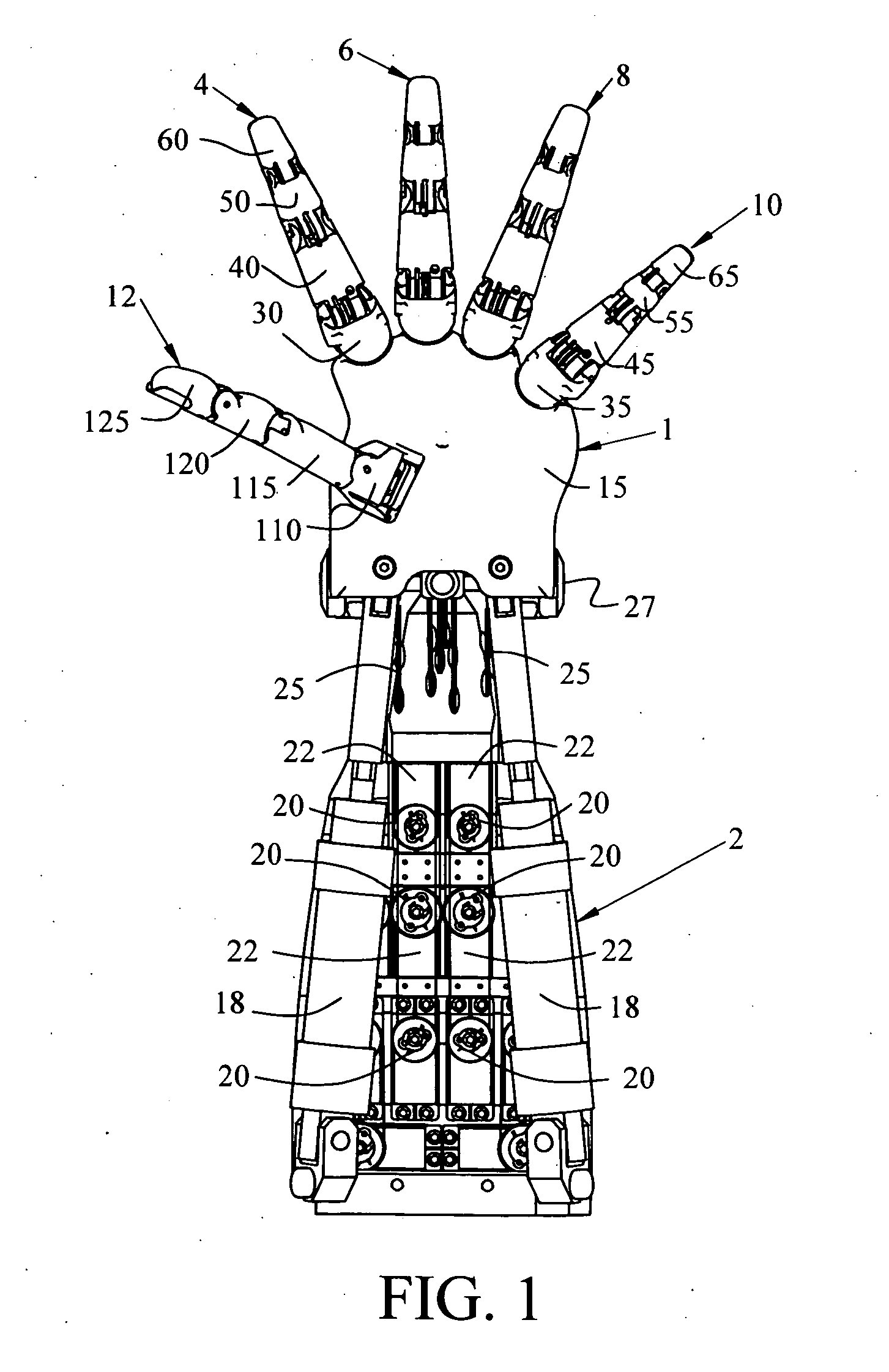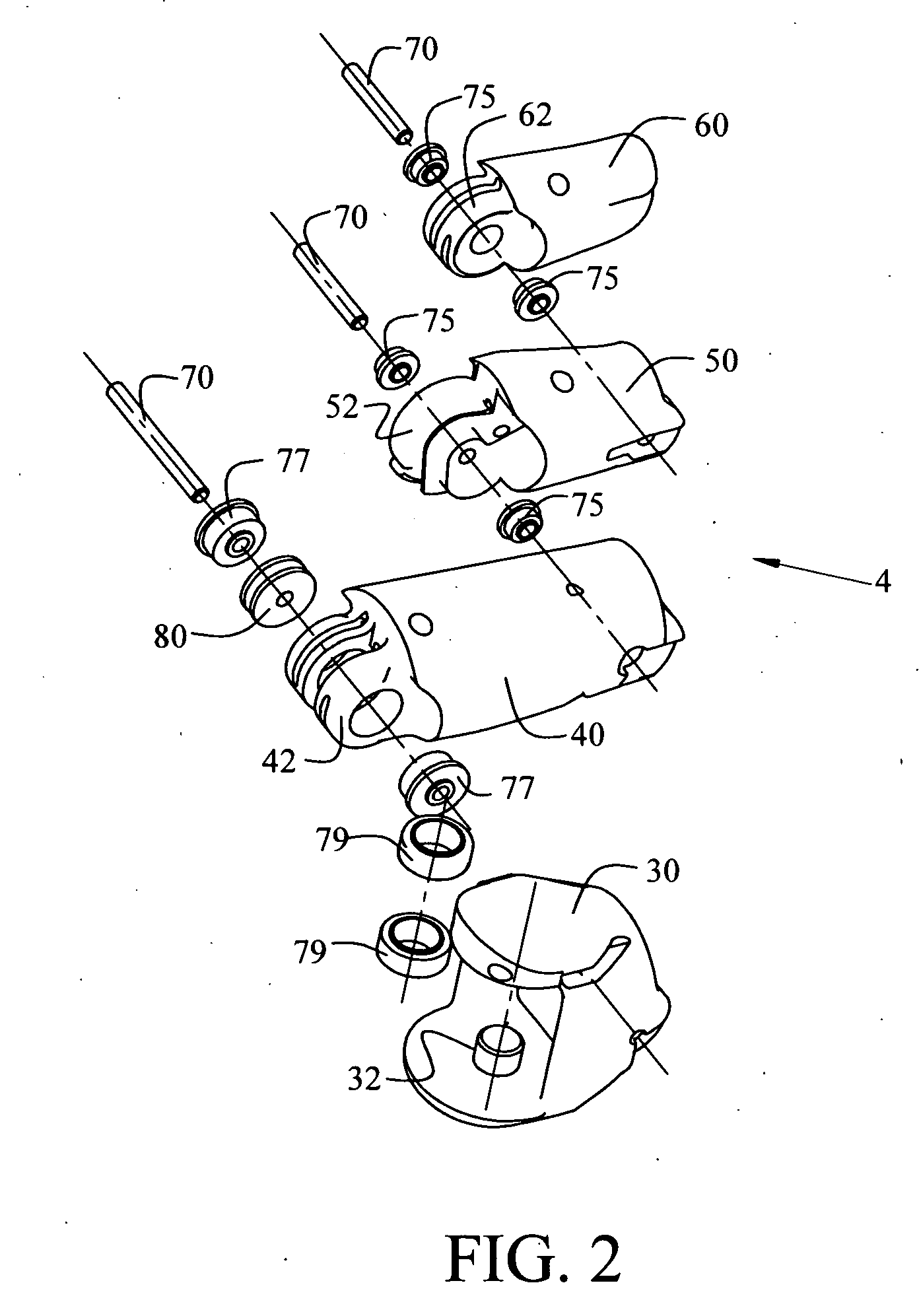Robotic hand and arm apparatus
a hand and arm technology, applied in the field of robotic or artificial arms, can solve the problems of high complexity and difficulty in maintenance, bulky design, and inability to meet the needs of use, and achieve the effects of reducing the number of parts, facilitating assembly, and reducing the cost of both parts
- Summary
- Abstract
- Description
- Claims
- Application Information
AI Technical Summary
Benefits of technology
Problems solved by technology
Method used
Image
Examples
Embodiment Construction
[0060] The description above and below and the drawings of the present document focus on one or more currently preferred embodiments of the present invention and also describe some exemplary optional features and / or alternative embodiments. The description and drawings are for the purpose of illustration and not limitation. Those of ordinary skill in the art would recognize variations, modifications, and alternatives. Such variations, modifications, and alternatives are also within the scope of the present invention. Section titles are terse and are for convenience only.
[0061] As illustrated in FIG. 1, there is a robotic hand 1 having a plurality of articulated digits or fingers. In the preferred embodiment there are five digits, an index finger 4, a middle finger 6, ring finger 8, a little finger 10 and a thumb 12. Each finger and thumb further comprises a plurality of phalanges. The index finger 4 comprises a metacarpal phalange 30, connected to a proximal phalange 40, connected ...
PUM
 Login to View More
Login to View More Abstract
Description
Claims
Application Information
 Login to View More
Login to View More - R&D
- Intellectual Property
- Life Sciences
- Materials
- Tech Scout
- Unparalleled Data Quality
- Higher Quality Content
- 60% Fewer Hallucinations
Browse by: Latest US Patents, China's latest patents, Technical Efficacy Thesaurus, Application Domain, Technology Topic, Popular Technical Reports.
© 2025 PatSnap. All rights reserved.Legal|Privacy policy|Modern Slavery Act Transparency Statement|Sitemap|About US| Contact US: help@patsnap.com



